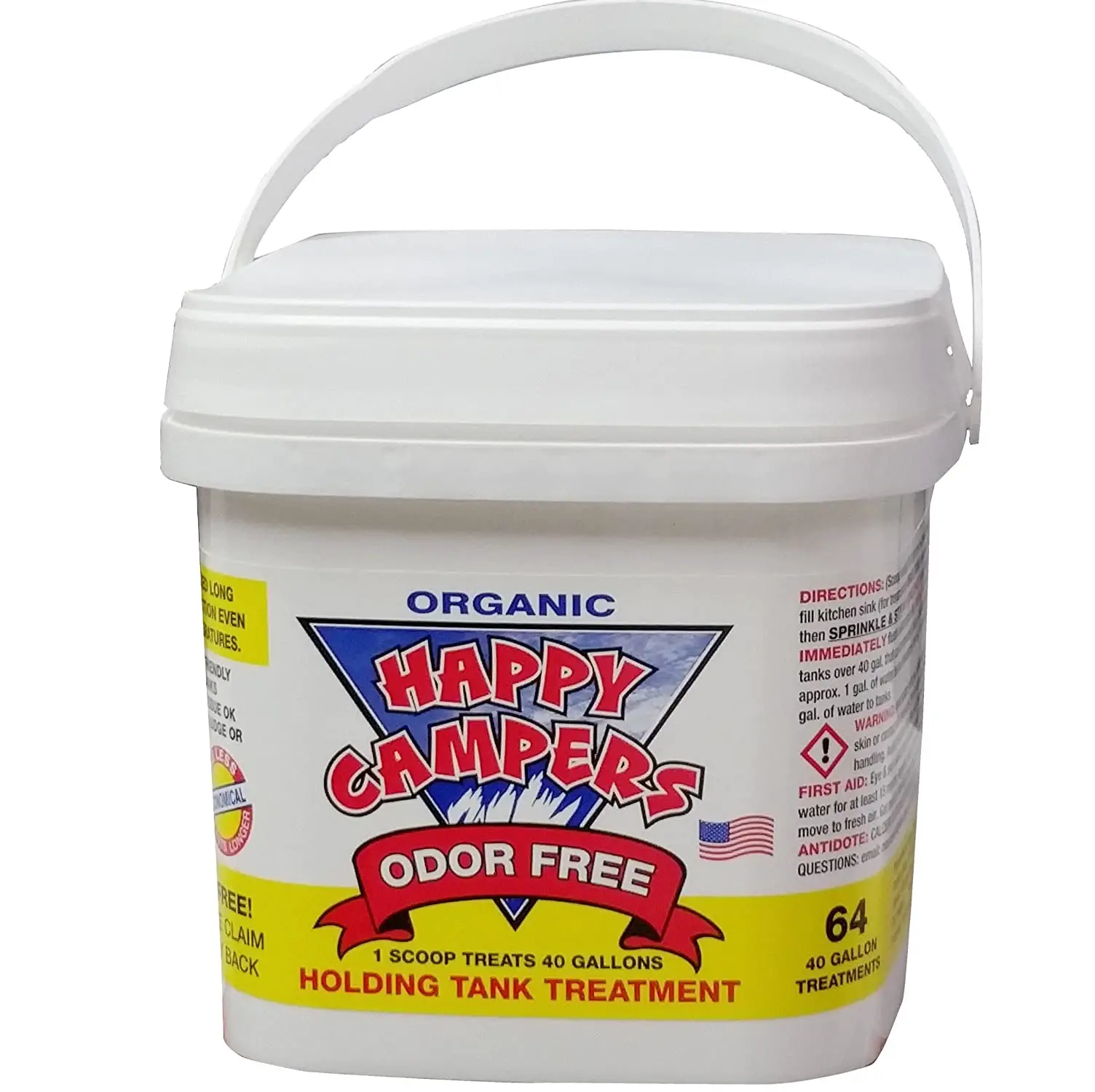
- Brand HAPPY CAMPERS
- Item Weight 4.16 pounds
- PD 6.85 x 5.63 x 5.12 inches
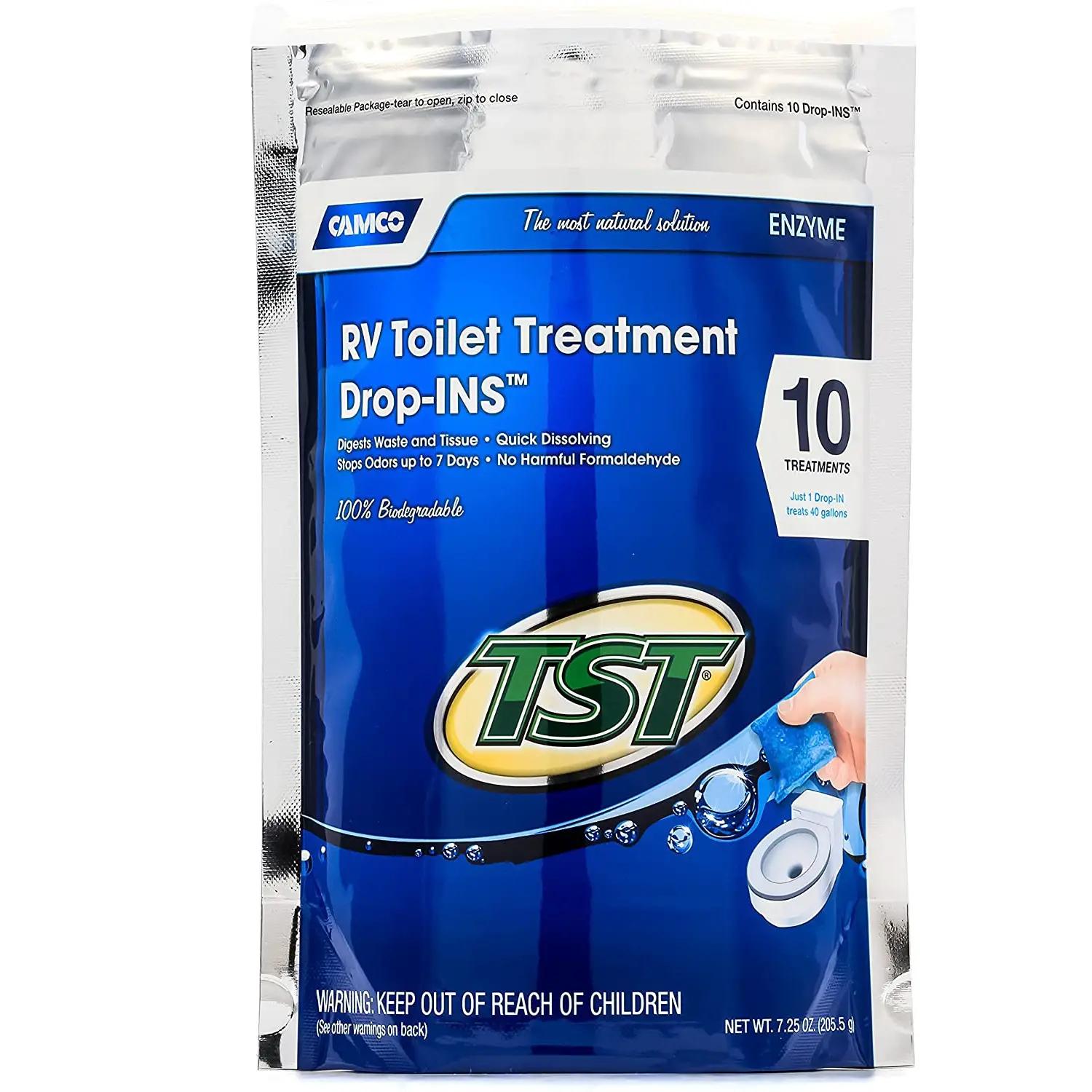
- Brand Camco
- Item Weight 0.49 Pounds
- Item Weight 7.8 ounces
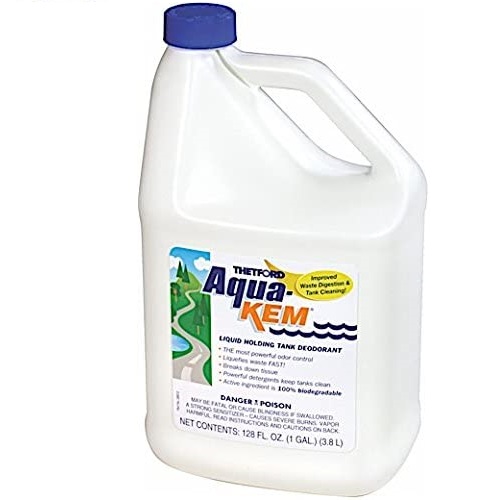
- Brand Thetford
- Item Weight 9.15 pounds
- PD 4.75 x 6.75 x 11.75 inches
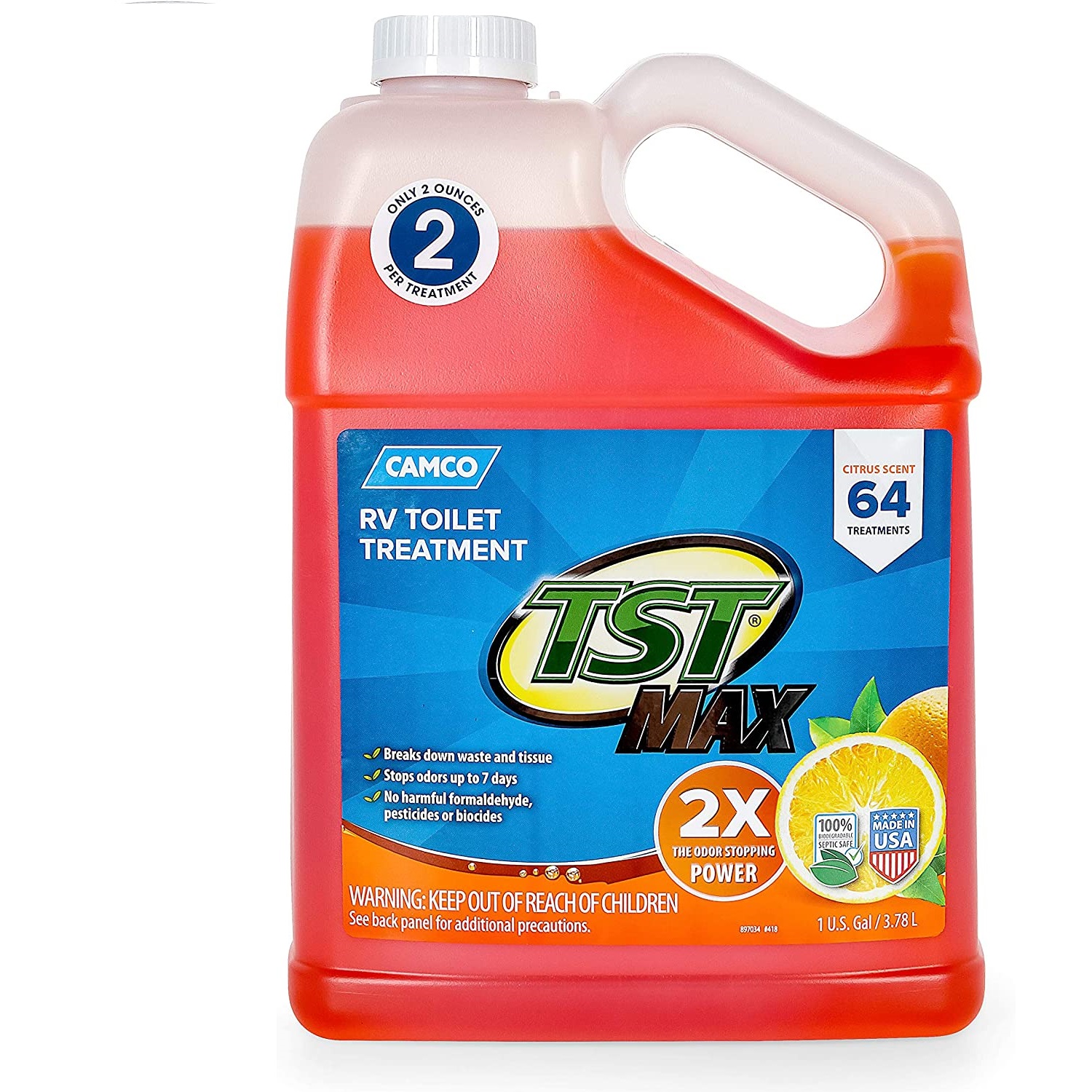
- Brand Camco
- Item Weight 13.7 pounds
- PD 12.28 x 7.99 x 5.87 inches
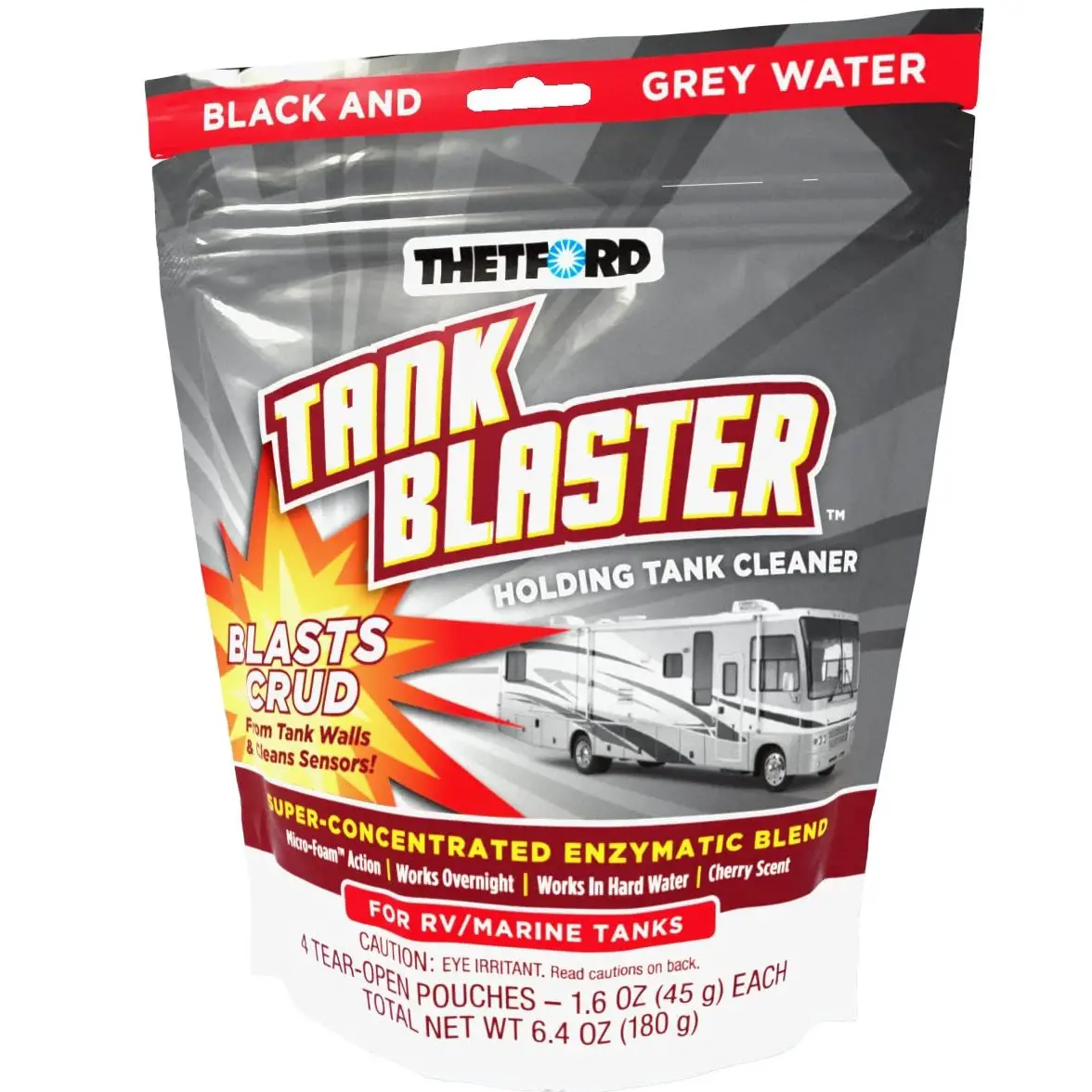
- Brand Thetford
- Item Weight 6.4 ounces
- PD 8.5 x 7.5 x 1 inches
Choose the Best RV Black Tank Treatments
Customer’s Choice: the Best Rated RV Black Tank Treatments
31 users answered this survey. Please help us improve this review!
All RV owners know that Black Tank Treatment is a must-have. But with so many choices, it can be hard to decide which one is right for you! There are a lot of different types and styles when it comes to black tank treatments. From waterless feasible options, biodegradable ones or even natural alternatives like lemon juice mixed with bleach – there’s something for everyone! But how do you know which one will work best? This article has gathered all the knowledge about these products here. So read on if you’re interested in what they can offer your RV lifestyle today!
Table of Contents
RV Holding Tank Treatment from HAPPY CAMPERS, for 64 procedures
 Every RV owner is always looking for an effective RV holding tank treatment. The product from HAPPY CAMPERS for Tank Treatment is one of the most effective in the series of toilet treatments.
Every RV owner is always looking for an effective RV holding tank treatment. The product from HAPPY CAMPERS for Tank Treatment is one of the most effective in the series of toilet treatments.
This highly concentrated water-activated mineral blend is perfect for gray and black tanks, and is a formaldehyde-free, effective odor neutralizer. HAPPY CAMPERS RV Holding Tank Treatment is the perfect solution for all of your campground needs. It can quickly dissolve household tissue and also helps prevent backing up into your septic system, preventing potential problems before they arise!
There is no need to worry about the odors associated with traditional RV holding tanks. The environmentally friendly product can be used for waste solids without any smell and it does not contain harmful chemicals or toxins like others do because it’s made from natural resources! It will break down at room temperature (up 100 degrees Celsius) so you don’t have pesky sludge build-up in your rig either.
Camco TST RV Toilet Drop-Ins Treatment, Blue
 The Camco TST RV Toilet Drop-Ins Treatment is an easy-to-use black water holding tank that uses a complex blend of bacteria and enzymes to digest both liquid and solid waste.
The Camco TST RV Toilet Drop-Ins Treatment is an easy-to-use black water holding tank that uses a complex blend of bacteria and enzymes to digest both liquid and solid waste.
The innovative, eco-friendly solution to stopping unpleasant odors and toilet paper from ever happening again! This product will work for 10 treatments before needing replacement. It’s safe on septic tanks too so you can finally enjoy a clean home without worrying about costly repairs or replacements later down the line.
The “rain” fragrance is pleasant and not overpowering. The Camco TST RV Toilet Drop-Ins Treatment has a long shelf life, making it a great choice for those who are looking for an effective and affordable RV holding tank treatment.
Holding tank treatment for RV toilets Aqua-Kem from Thetford, 1 gallon
 Aqua-Kem Holding Tank Treatment is a powerful waste tank deodorant that has been formulated to prevent clogging. The Aqua-Kem Holding Tank Treatment is a great way to eliminate any odors coming from your RV or boat’s toilet.
Aqua-Kem Holding Tank Treatment is a powerful waste tank deodorant that has been formulated to prevent clogging. The Aqua-Kem Holding Tank Treatment is a great way to eliminate any odors coming from your RV or boat’s toilet.
This product comes in one quart size bottle that can be used at home, on the go!
The main advantage of this product is that it is easy to use. You just have to add the required amount of Aqua-Kem Holding Tank Treatment to the toilet bowl, and then flush it away. This product is also biodegradable and safe for the environment.
Aqua-Kem is a product that can be used for any situation. It cleans the grease on toilet surfaces and in drains to prevent clogging, maintains your tank from getting worse while keeping it clean at all times of year with its versatile qualities being able work under low or high temperatures making this an essential purchase!
Ultra-Concentrate with Orange Scent from Camco TST for RV Toilet Treatment, 3,7 liters
 Looking to keep your RV toilet fresh and clean? Look no further than Camco’s TST Ultra-Concentrate with Orange Scent. This powerful formula comes in a convenient 1-gallon bottle, and is easy and economical to use.
Looking to keep your RV toilet fresh and clean? Look no further than Camco’s TST Ultra-Concentrate with Orange Scent. This powerful formula comes in a convenient 1-gallon bottle, and is easy and economical to use.
Best of all, it doesn’t contain harmful formaldehyde, pesticides or biocides, so it’s safe for the environment. Simply add one dosage to your tank for up to 64 treatments – and say goodbye to unpleasant odors!
Plus, the orange fragrance makes everything smell delightful. There are no temperature restrictions, so you can use this product any time of year. Keep your RV smelling great – order Camco’s TST Ultra-Concentrate with Orange Scent today!
Tank Cleaner Pouches from Thetford, Pack of 4
 Are you tired of your holding tank getting dirty? These Holding Tank Cleaner Pouches are the perfect solution! This unique dual action formula has been specially designed to be super concentrated and enzymatic.
Are you tired of your holding tank getting dirty? These Holding Tank Cleaner Pouches are the perfect solution! This unique dual action formula has been specially designed to be super concentrated and enzymatic.
If you’re looking for a cleaner that has the ability to freshen up your RV or Marine holding tank while breaking down loosened deposits, then this product is perfect. It also works well in plumbing systems and on any seals & surfaces where purification needs attention!
Finally, the micro-foam action blasts crud and lifts deposits from tank walls – specifically formulated for black/gray water. Your search for the perfect holding tank cleaner is over!
Buyer’s Guide
What is a Black Tank on an RV?
The black tank is the holding tank on an RV that stores all the wastewater from the RV toilet. This waste is made up of both solid and liquid waste, which can make it difficult to break down and clean. That’s where a good black tank treatment comes in.
The black tanks are typically located under the RV, and they are usually made of either plastic or fiberglass.
Most RVs will have two holding tanks: a gray water tank and a black water tank. The gray water tank holds all the wastewater from the sinks and showers, while the black water tank holds all the wastewater from the toilet. It’s important to keep these two tanks separate because if you mix them, it can create some serious health hazards [1].
What are the Different Types of Black Tank Treatments?
There are four main types of black tank treatments: liquids, powders, gels, and packets. Each type has its own set of pros and cons that you should consider before making a purchase.
When looking at different types of black tank treatments it is clear that liquids are the most popular because they’re easy to use and effective. Powders can also be very useful, but not as many people know about them yet due in part to their complexity which makes using these sorts easier than other forms such as gels or capsules where you need specific procedures for proper operation. If done incorrectly could cause clogs.
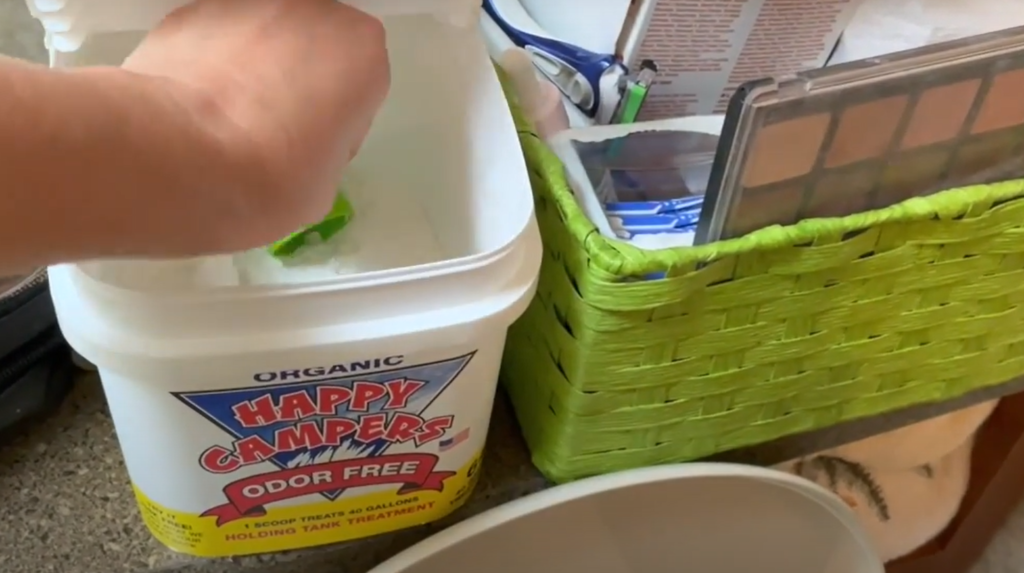
Gelling agents have been shown time after again when dealing with unhealthy plumbing so why wouldn’t you want one inside your home? Lastly, packets may seem like an option worth considering – until you realize there’s no way to tell how much is actually getting into the water and if it’s not enough then you’re just wasting your time [2].
Liquid Treatment
Liquids are the most popular type of black tank treatment because they are easy to use and effective at preventing clogs. They can come as concentrates or ready-to-use formulas.
Ready-to-use formulas are more expensive, but they don’t require you to add water before using them. Concentrated liquids offer an affordable alternative with no added cost for the customer; however it takes some extra work on your end since there will be liquid left over after adding this product into whatever else may have been applied.
The concentrate is easy to use. Simply add enough water for your desired result, then mix in the bottle and watch as it turns into a thick gooey liquid that’ll make any plant happy! Once you have mixed everything well enough, simply fill up all three tanks with fresh cold tap water – no need to let them sit overnight or anything like that. Just give them two minutes while they’re draining away at least one cup per minute and run some through their pipes before switching back over again once filled.
To use a ready-to-use formula, you will simply add it to your tank and then flush out the system with some water.
Liquids are effective at preventing clogs because they lubricate and break down waste. They also help to control odors by creating a barrier between the waste and the air.
The main downside of liquids is that they can be messy to use. If you don’t mix them properly, they can cause clogs. They can also be difficult to use in cold weather because they can freeze.
Powdered Treatment
Powders are a less popular option because they can be difficult to use and cause clogs if not used properly.
Powdered treatments must be mixed with water before using them. To use a powder, you will need to add the recommended amount of water to the tank. Then, you will add the powder and mix it well. Once the tank is full, you will need to run some water through the hose to flush out the system.
The powered treatments suit those who are looking for an alternative to liquid treatments. They’re also more compact and easier to store than liquids.
Powders can be difficult to use because they can clog the system if not used properly. They can also be messy to use and difficult to mix evenly.
The main downside of powders is that they can be difficult to use and cause clogs if not used properly.
Gels
Gels are another option that can be effective, but they can also be messy to use. Gels are similar to liquids in that they are easy to use and effective at preventing clogs. They can come as concentrates or ready-to-use formulas. To use a gel, you will simply add it to your tank and then flush out the system with some water.
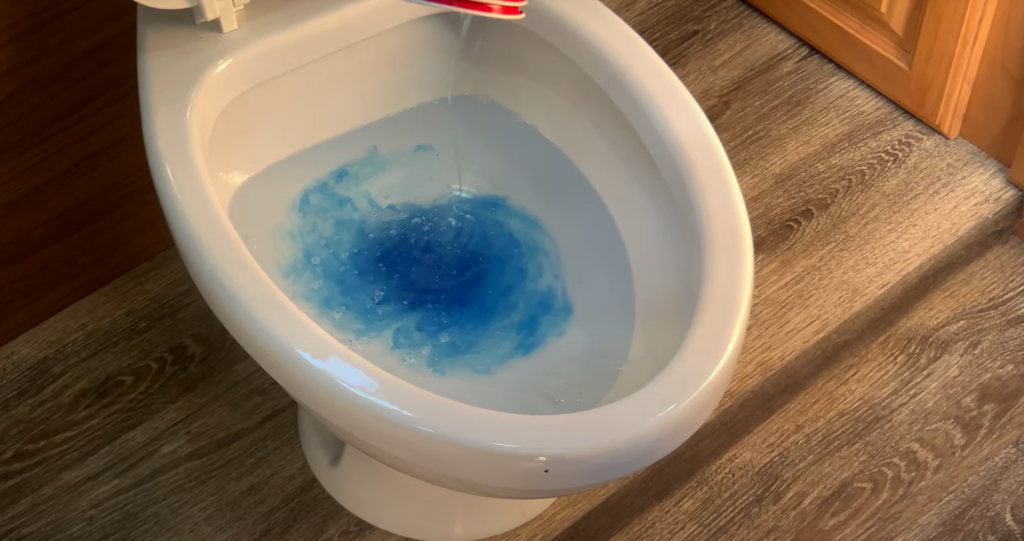
Gels come in bottles or tubes and can be squeezed into the tank. Some gels come with a nozzle for easy application. This type of black tank treatment is less messy to use than liquids. With gels, you don’t have to worry about spillage or dripping.
Packets
If you choose packets, be sure to add the recommended number of packets for your tank size. Too few packets will not treat your waste properly and too many packets can cause clogs.
Packets are the least popular option because they often don’t work as well as the other types of treatments. This is because they often don’t dissolve completely, which can leave residue in your tank.
The packets are effective if used correctly. If you have a large tank, you may need to use more than one packet. Packets are easy to use, but they can be messy if they don’t dissolve completely.
The main downside of packets is that they often don’t work as well as the other types of treatments. This is because they often don’t dissolve completely, which can leave residue in your tank.
To ensure your black tank stays clean and free from odor-causing buildup, it’s important to choose the right treatment for your needs. The type of treatment you choose will depend on your personal preferences and the size of your tank.
Is a Black Tank Different from a Gray Tank?
The black tank is where all the water from your toilet goes. This means that it’s subject to more waste and bacteria than the gray tank, which is used for showering and washing dishes. As a result, you’ll need to treat your black tank with a stronger cleaner to keep it sanitary.
The gray tanks can still benefit from a cleaner, but it’s not as essential as it is for the black tank. These tanks are typically emptied less often than the black tank, so there’s less chance for waste to build up. However, if you notice a bad odor coming from your gray tank, it’s a good idea to treat it with a cleaner.
How Often Should I Treat My Black Tank?
This is a common question with no easy answer. It depends on how often you use your RV, what kind of water you’re using to fill your tanks, and how much waste is going into your black tank. A good rule of thumb is to treat your black tank every time you empty it. This will help keep things clean and prevent build-up. On average you should do it every three-four days [3].
If you have a smaller family or don’t use your RV as often, you might be able to get away with treating it less often. The most important thing is to pay attention to how full your black tank gets and to treat it before it gets too full.
What to Consider in an RV Black Tank Treatment?
When it comes to RVing, one of the most important things you need to think about is how you’re going to keep your black tank clean. This is where all the sewage and wastewater from your RV goes, so you must treat it right!
There are a few different things you need to consider when choosing an RV black tank treatment:
- The type of treatment: There are three main types of treatments – chemical, enzyme, and bacteria-based. Each has its pros and cons, so you’ll need to decide which one is right for you.
- The size of the tank: You’ll need to make sure that the treatment you choose is suitable for the size of your black tank.
- The climate: The climate you’re RVing in can affect the type of treatment you need. For example, if you’re in a hot climate, you’ll need a treatment that won’t evaporate quickly.
- Your budget: There’s a wide range of prices for RV black tank treatments, so you’ll need to decide how much you’re willing to spend.
Budget
When it comes to RV black tank treatments, you’ll find that there’s a wide range of prices. You can find treatments that cost as little as $0.50 per gallon, or as much as $30 per gallon.
The type of treatment you choose will also affect the price. For example, chemical treatments tend to be the cheapest option, while bacteria-based treatments are usually more expensive.
You’ll also need to consider how often you’ll need to use the treatment. If you’re using it regularly, then you may want to choose a cheaper option so that you don’t have to spend too much money on it.
Finally, your budget will also depend on how many people are using the RV black tank. If more people are using it, then you’ll need to use more treatment, which will cost more money.
Environmental Friendliness
When you’re RVing, you’re in nature. This means that you should try to be as environmentally friendly as possible.
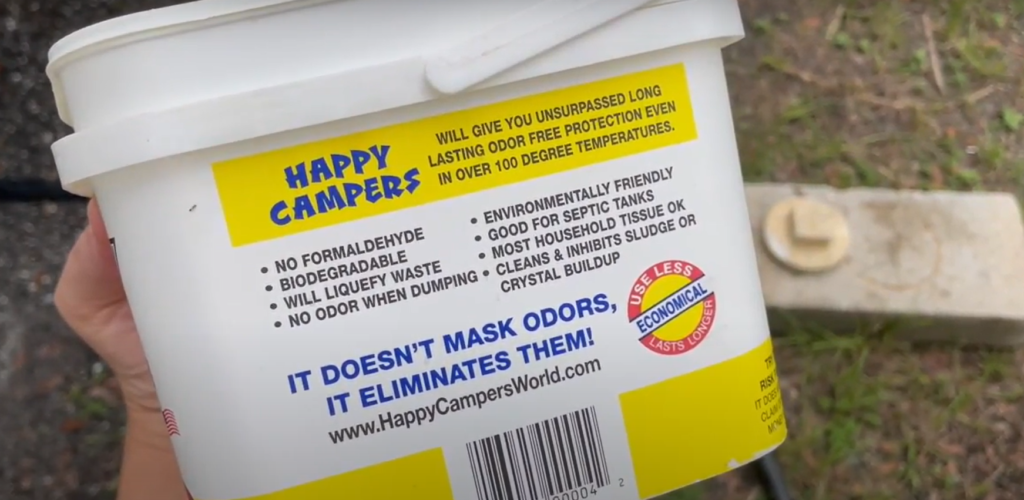
There are a few things to consider when it comes to environmental friendliness:
- The packaging: Some treatments come in plastic bottles, while others come in biodegradable bags. You’ll need to decide which option is more important to you.
- The ingredients: Some treatments use chemicals and other synthetic ingredients that can harm the environment. If this is something you’re concerned about, then you’ll need to choose a treatment that uses natural ingredients.
- The disposal: Once you’ve used the treatment, you’ll need to dispose of it properly. This means disposing of it in a sewage system or septic tank.
Amount of Treatment
The amount of treatment you’ll need will depend on the size of your black tank. For example, a 40-gallon tank will require more treatment than a 20-gallon tank. Moreover, if you’re using the RV black tank for a long period, you’ll need to use more treatment than if you’re only using it for a short period.
You should also consider how often you’ll need to use the treatment. If you’re using it regularly, then you may want to choose a larger size so that you don’t have to keep buying it as often.
Treatment Type
There are three main types of RV black tank treatments: chemical, enzyme, and bacteria-based. Each has its pros and cons, so you’ll need to decide which one is right for you.
Chemical treatments are the most common type of treatment. They’re usually the cheapest option and they work well in most situations. However, they can be harmful to the environment and they may not work as well in extreme temperatures.
Enzyme treatments are less common than chemical treatments. They’re more expensive, but they’re also more effective. Moreover, they’re safe for the environment and they work well in all types of weather.
Bacteria-based treatments are the least common type of treatment. They’re usually the most expensive option, but they’re also the most effective. They’re safe for the environment and they work well in all types of weather.
Efficiency of the Product
You’ll also need to consider how effective the treatment is. This will depend on the ingredients, as well as the type of treatment. It will also depend on how often you use it.
These treatments are usually more expensive, but they’re worth it if you want the best results. The RV owners are sure that the correct usage of the treatment will result in a cleaner and better-smelling black tank.
Safe to Use on Your Tank
You’ll also need to make sure that the treatment you choose is safe to use on your black tank. This means that it won’t damage the tank or cause any problems with the plumbing.
You can treat your RV black tank correctly if you follow these tips:
- Read the instructions carefully before using the product.
- Make sure you’re using the right amount of treatment.
- Dispose of the product properly after use.
If you follow these tips, then you’ll be able to keep your black tank clean and odor-free. Moreover, you’ll be able to avoid any damage to your RV or its plumbing.
In conclusion, there are a few things to consider when choosing an RV black tank treatment. You should consider the type of treatment, the ingredients, the packaging, and the disposal method. You should also think about how often you’ll need to use it and how much money you’re willing to spend on it. Keep these factors in mind when choosing a treatment for your RV black tank and you’ll be sure to find the best one for your needs.
Alternatives to Black Tank Cleaners
If you don’t want to use harsh chemicals or you’re looking for a more environmentally friendly option, there are a few alternatives to black tank cleaners. One popular option is white vinegar. You can add a cup or two of vinegar to your tanks when you first fill them up and then again every time you empty them. Vinegar is acidic and will help break down waste and prevent build-up in your tanks.
Another alternative is baking soda. Baking soda is alkaline and will neutralize the acid in your tanks, preventing corrosion. You can add a cup or two of baking soda to your tanks when you first fill them up and then again every time you empty them.
There are other alternatives and ways to treat the black tank of RV that are really helpful and effective.
Snakes or Hoses
There are two ways to clean your black tank: with a snake or with a hose. If you have a small tank, you can probably get by just using a hose. But if you have a large tank, you’ll need to use a snake in addition to the hose.
The advantage of using a snake is that it will reach the bottom of your tank and help break up any waste that’s stuck there. The disadvantage is that it can be difficult to use and it can be easy to damage your tank if you’re not careful.
The advantage of using a hose is that it’s easy to use and you don’t have to worry about damaging your tank. The disadvantage is that it won’t reach the bottom of your tank and it won’t break up any waste that’s stuck there.
So, which should you use? It depends on your situation. If you have a small tank, a hose is probably all you need. But if you have a large tank, you’ll need to use both a hose and a snake.
Sewer Hose Attachments
If you’re going to use a hose to clean your black tank, you’ll need a sewer hose attachment. There are two types of sewer hose attachments: the kind that attaches to your RV’s sewer outlet and the kind that attaches to your black tank.
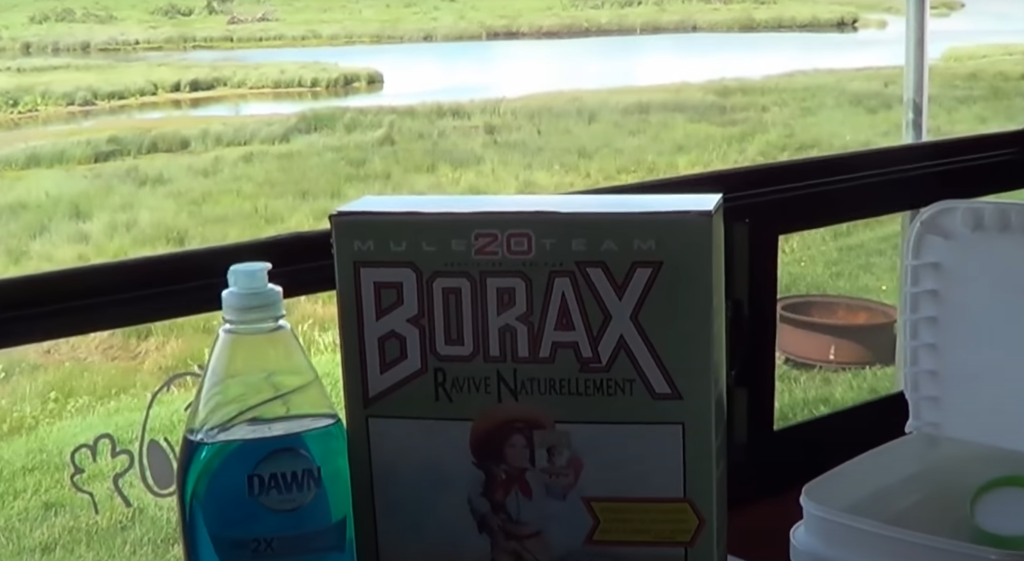
The advantage of using an RV sewer outlet attachment is that it’s easy to use and it doesn’t require any special adapters. The disadvantage is that it can be difficult to remove and it can leak.
The advantage of using a black tank attachment is that it’s easy to remove and it doesn’t leak. The disadvantage is that it requires a special adapter and it can be difficult to use.
Home Remedies
There are a few home remedies that you can use to clean your black tank. One popular option is to add a cup or two of bleach to your tanks when you first fill them up and then again every time you empty them. Bleach is a powerful disinfectant and will help kill any bacteria in your tanks.
Baking soda is alkaline and will neutralize the acid in your tanks, preventing corrosion.
Other home remedies are also helpful and effective:
- Adding enzymes to your tank will help break down waste and prevent build-up.
- Adding vinegar to your tank will help acid and break down waste.
- Adding baking soda to your tank will neutralize the acid and prevent corrosion.
All of these home remedies are cheap, easy, and effective ways to clean your black tank. Choose one or two that you think will work best for you and give them a try!
Pros and Cons of Black Tank Treatments
There are several factors to consider when choosing a black tank treatment. In this section, we will go over some of the pros and cons of each type of treatment.
Powdered treatments are typically the most affordable option and can be easily added to your tank. However, they can be difficult to dissolve completely and may not work as effectively in very cold temperatures.
Liquid treatments are easy to use and tend to work well in all temperature ranges. However, they can be more expensive than powdered treatments.
Gel treatments are slowly becoming more popular due to their ease of use and effectiveness. They can be more expensive than other options, but many people feel that they are worth the price.
Some RV toilets owners will choose to use a combination of treatments, such as powder and gel. This can be an effective way to get the best of both worlds because it allows you to customize your treatment based on your needs. And don’t forget, you can always experiment to find what works best for you!
Comparison of Indicators for Choosing RV Black Tank Treatment
When it comes to maintaining and treating the black tank in your RV, there are several indicators to consider. This table provides a comparison of these indicators to help you choose the most suitable RV black tank treatment for your needs.
| Indicator | Explanation |
|---|---|
| Effectiveness | Determines how well the treatment breaks down waste, controls odors, and prevents clogs in the black tank. |
| Usage Instructions | Provides information on the proper dosage, frequency of use, and any special instructions for using the treatment effectively. |
| Compatibility | Indicates whether the treatment is compatible with various types of RV plumbing systems, including septic systems. |
| Environmental Friendliness | Considers the impact of the treatment on the environment, such as its biodegradability and use of eco-friendly ingredients. |
| Storage | Refers to the storage requirements of the treatment, including its shelf life, container size, and ease of storage in your RV. |
| Price | Compares the cost of the treatment and its value for money in relation to its effectiveness and other features. |
This table compares various indicators that are crucial for choosing the right RV black tank treatment. Effectiveness measures the treatment’s ability to break down waste, control odors, and prevent clogs. Usage instructions provide guidance on using the treatment properly. Compatibility assesses whether the treatment works well with different RV plumbing systems. Environmental friendliness considers the treatment’s impact on the environment. Storage outlines the treatment’s storage requirements. Price compares the cost and value of the treatment.
FAQ
What is the best chemical to use for RV black tank?
The best chemicals to maintain the RV black tank include:
- RV holding tank treatments with enzymes
- RV holding tank treatments with bacteria
- RV holding tank deodorizers
- RV holding tank cleaners
- RV septic tank cleaners
Products that contain a blend of these ingredients are often the most effective. However, it is important to read the labels carefully and follow the directions to avoid damaging your plumbing or causing other problems.
How do I freshen my RV black tank?
To freshen your RV black tank, you will need to:
- Empty and clean the tank regularly
- Add a holding tank treatment with enzymes or bacteria
- Use a holding tank deodorizer
- Avoid using too much water when flushing the toilet
Following these simple steps will help keep your RV black tank fresh and free of odors.
Can you use baking soda in RV black tank?
Yes, baking soda can be used in RV black tanks. It is a natural deodorizer and can help keep the tank fresh. However, it is important to use it sparingly as too much baking soda can damage the plumbing.
Can you put Dawn in RV black tank?
Yes, Dawn dish soap can be used in RV black tanks. It is a powerful cleaner and can help break down waste. However, it is important to use it sparingly as too much Dawn can damage the plumbing. Moreover, using Dawn in your black tank can attract more grease and oil, which can cause clogs.
How do you get rid of the poop pyramid in RV black?
The best way to get rid of a poop pyramid in an RV black tank is to use a holding tank deodorizer. This will help break down the waste and prevent it from building up. However, if the pyramid is severe, you may need to have the tank professionally cleaned.
Does Ridex work in RV tanks?
Ridex is a holding tank treatment that contains enzymes and bacteria. It is designed to break down waste and prevent odor. Ridex is safe for RV plumbing and can be used in both black and gray tanks.
Can you put vinegar in RV black tank?
Yes, vinegar can be used in RV black tanks. It is a natural cleaner and can help break down waste. However, it is important to use it sparingly as too much vinegar can damage the plumbing. Moreover, using vinegar in your black tank can attract more grease and oil, which can cause clogs.
Is Borax safe for RV tanks?
Such products as Borax are not recommended for use in RV black tanks as they can damage the plumbing. It is best to stick with products that are specifically designed for holding tanks.
How do I stop my RV black tank from smelling?
The best way to stop an RV black tank from smelling is to use a holding tank treatment with enzymes or bacteria. This will help break down the waste and prevent it from building up. Additionally, using a holding tank deodorizer will help keep the tank fresh and free of odors.
How often should you flush your black tank?
It is typically recommended to flush an RV black tank every time it is emptied. This will help prevent waste from building up and causing odors. More often you should flush the black tank if it is not draining properly or if you are having difficulty getting rid of odors.
How do you keep a black tank from smelling?
The unpleasant smell associated with black tanks is not the waste itself, but the bacteria that break it down. These harmful bacteria can build up and cause odors. The best way to keep a black tank from smelling is to use a holding tank treatment with enzymes or bacteria.
How often should you dump your black water tank?
It is typically recommended to dump an RV black tank every time it is emptied. This will help prevent waste from building up and causing odors. More often you should dump the black tank if it is not draining properly or if you are having difficulty getting rid of odors.
How much water should you keep in your black tank?
It is typically recommended to keep at least 5 cm of water in an RV black tank. You should follow this rule even if you are using a holding tank treatment as the water will help to break down the waste and prevent odors.
Are RV black tank treatments necessary?
Yes, RV black tank treatments are essential for maintaining a clean and odor-free black water tank. These treatments help break down waste, control odors, and prevent the build-up of solids in the tank, ensuring proper functioning and preventing potential issues.
How do RV black tank treatments work?
RV black tank treatments typically contain enzymes, bacteria, or chemicals that help break down waste and eliminate odors. Enzymes and bacteria-based treatments digest organic matter, while chemical-based treatments chemically neutralize odors and help prevent waste build-up.
How often should I use RV black tank treatments?
The frequency of using RV black tank treatments depends on the product and the manufacturer’s instructions. In general, treatments are recommended after every tank dump and before adding fresh water to the tank. Following the product’s instructions will ensure optimal performance.
Can I use homemade remedies instead of RV black tank treatments?
While some RV owners may opt for homemade remedies, such as vinegar, baking soda, or dish soap, it is generally recommended to use specialized RV black tank treatments. These treatments are specifically formulated to address the unique challenges of RV black water systems and provide better results.
Can RV black tank treatments harm the environment?
Most RV black tank treatments are designed to be safe for the environment when used as directed. However, it’s important to choose products labeled as environmentally friendly or biodegradable to minimize any potential impact on ecosystems. Always dispose of the treated waste properly at designated dump stations.
Do RV black tank treatments eliminate all odors?
While RV black tank treatments help control and reduce odors, they may not completely eliminate all odors in every situation. Factors such as extreme temperatures, excessive waste accumulation, or ventilation issues can still contribute to some odor. However, regular use of treatments should significantly minimize odors.
Can I use RV black tank treatments in freezing temperatures?
Some RV black tank treatments are specifically formulated to work in freezing temperatures. Look for treatments that are labeled as “winterized” or suitable for cold weather use. These products contain antifreeze properties to prevent freezing and maintain the effectiveness of the treatment.
Are RV black tank treatments safe for septic systems?
RV black tank treatments are generally safe for septic systems. However, it’s essential to choose treatments that are labeled as septic-safe or approved for use in septic systems. These treatments are designed to break down waste without harming the beneficial bacteria in septic systems. Always follow the product instructions and use as directed.
Can RV black tank treatments unclog a blocked black tank?
While RV black tank treatments can help prevent clogs and break down waste, they may not be effective in unclogging a severely blocked black tank. If you encounter a blockage, it’s best to address it with appropriate tools, such as a tank wand or professional assistance, to avoid further damage to the tank.
Useful Video: Holding Tank Treatment Battle w Odor Test
Conclusion
The reviewed RV Black Tank Treatments are all great choices and the best one for you will ultimately come down to personal preference. This guide provides you with reviews of five different products, all of which are effective in keeping your black tank clean. Moreover, the tips section at the end of this guide proves useful in helping you maintain a clean and odor-free black tank. This information is essential in ensuring that you have a pleasant RVing experience. With a little effort, you can keep your black tank clean and odor-free.
References:
- https://www.jeffsetter.com/best-rv-black-tank-treatment/
- https://www.thedrive.com/reviews/29907/best-rv-holding-tank-treatment
- https://uniquecampingmarine.com/blogs/dumping-rv-holding-tanks-series/how-often-should-you-dump-your-rv-holding-tanks

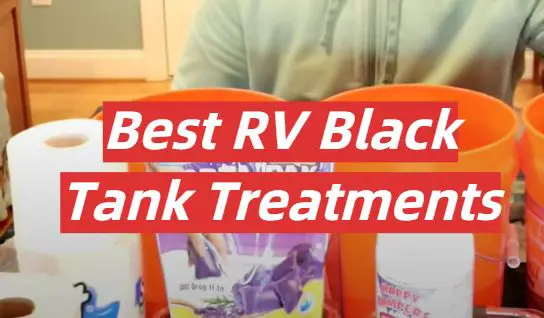

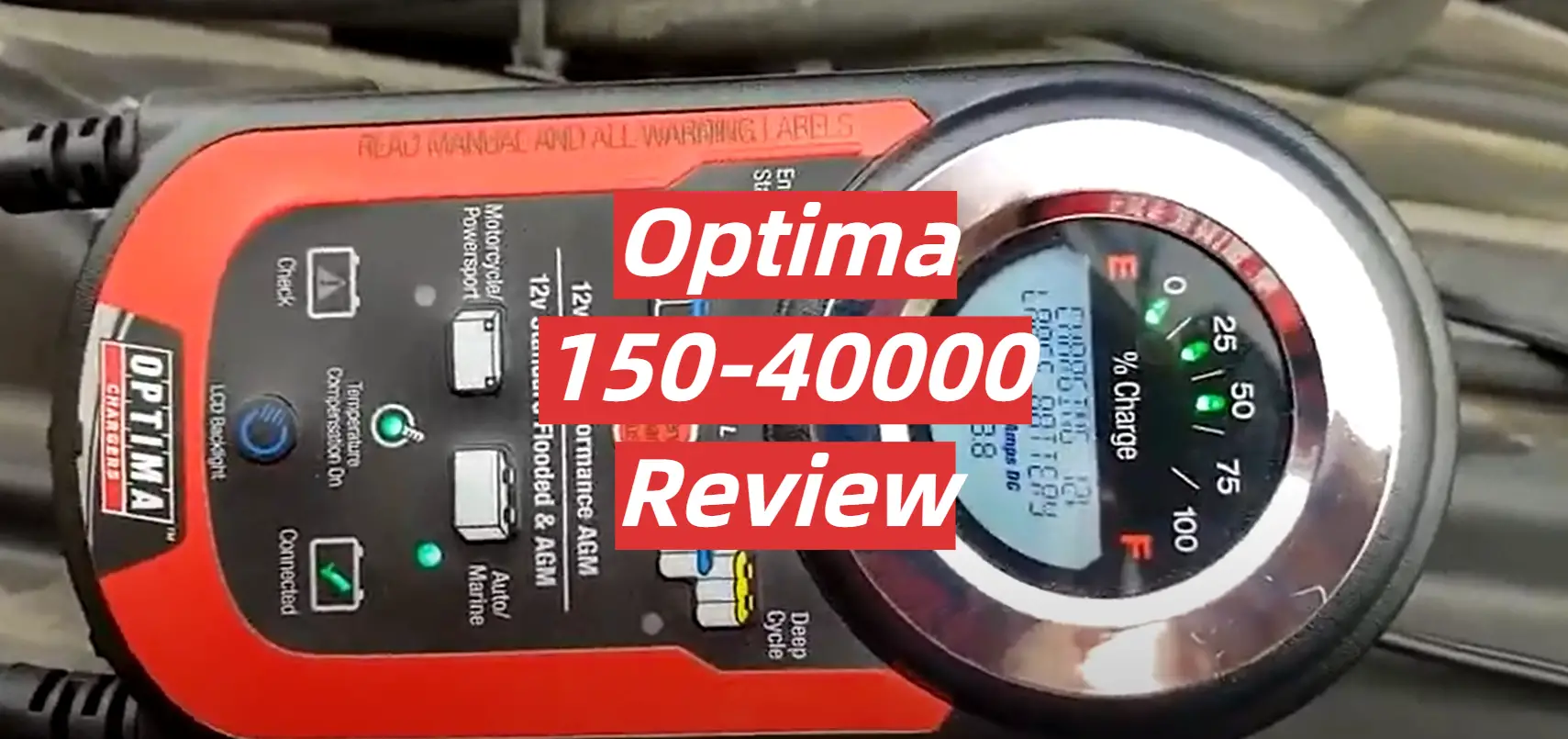

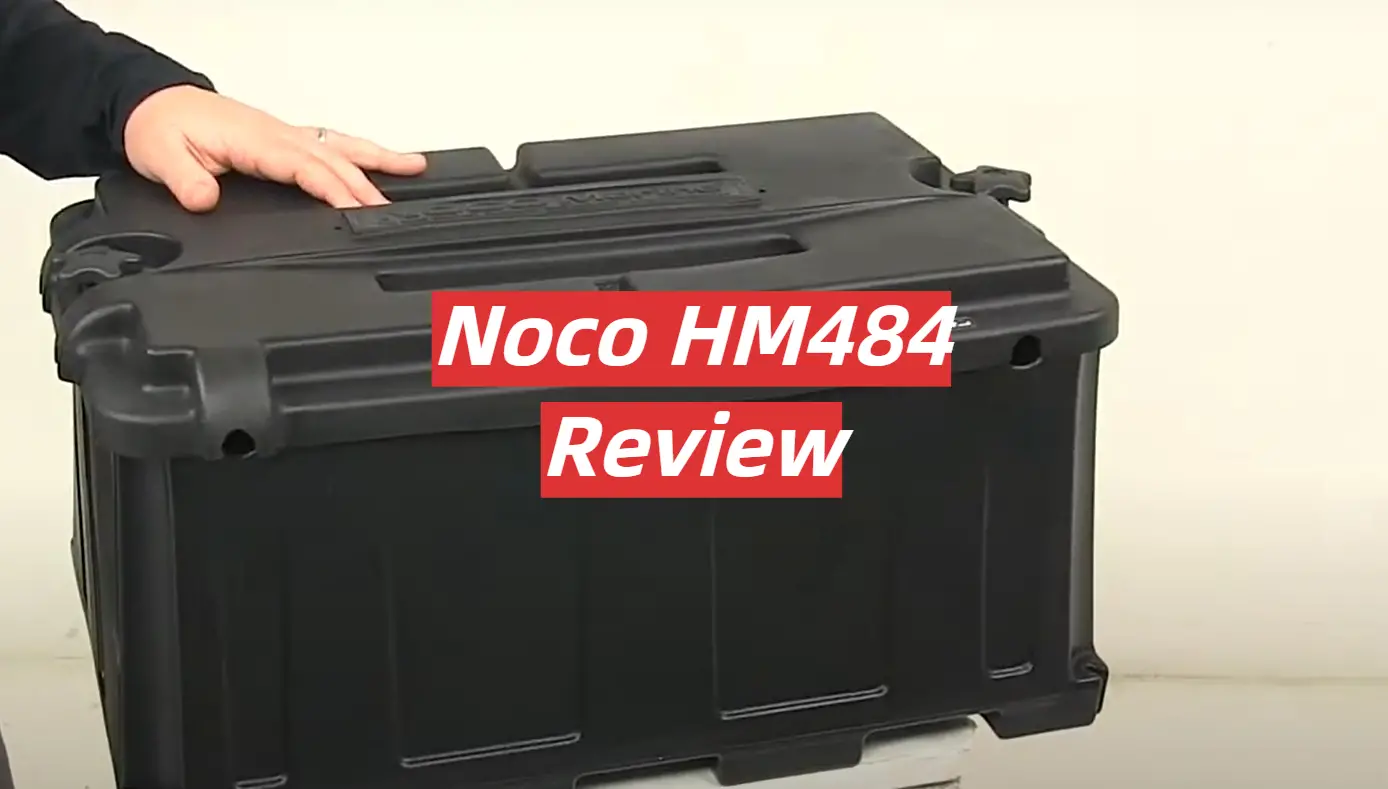
Leave a Reply